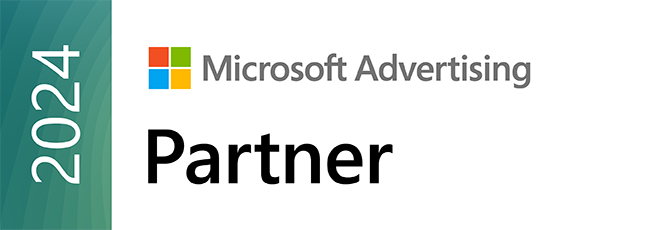Capitalizing on Digital Marketing to Boost Non-dues Revenue for Associations

The ever-evolving landscape of digital technology has made its mark on virtually every sector, and professional associations are no exception. As outlined in the 2021 Association Trends Study by Nimble AMS, associations are facing the challenging reality that membership dues aren’t always sufficient to support their initiatives. The need to diversify revenue streams is ever-present, and the digital realm offers a wealth of opportunities for associations to increase their non-dues revenue and foster association growth.
Digital Marketing: An Unexplored Goldmine for Achieving Non-Dues Revenue Growth
In today’s digitally-saturated world, digital marketing strategies play a transformative role in business growth. They offer an expanded reach, increase brand visibility, and provide cost-effective ways to engage with target audiences. According to Hubspot’s Not Another State of Marketing Report, more than 60% of marketers cited generating traffic and leads as their top challenge. Such strategies, when implemented correctly, can serve as the solution to this problem. In the context of associations, this means promoting your programs, events, and services to a broader audience, subsequently generating more non-dues revenue and contributing to association growth. As the 2021 Association Trends Study suggests, associations employing targeted digital strategies have seen significant revenue growth from non-dues sources.
The Digital Transformation Imperative
A crucial insight from the 2021 Association Trends Study is the emphasis on digital transformation in the post-COVID world. In an era where technology is rapidly evolving, maintaining a strong online presence is no longer an option; it’s a necessity. This observation echoes McKinsey’s report highlighting that the COVID-19 pandemic has accelerated the shift towards a more digital world and triggered changes in online shopping behaviors that are likely to have lasting effects.
The Wider Spectrum of Digital Marketing
However, digital marketing is not solely about having a website or being on social media. It involves employing strategic initiatives to reach your target audience effectively. Key elements of a successful strategy include Search Engine Optimization (SEO), content marketing, social media engagement, email marketing, and pay-per-click (PPC) advertising.
– Search Engine Optimization (SEO) is the practice of optimizing your website’s content and structure to improve its visibility in search engine result pages (SERPs). As Google’s SEO starter guide states, creating a SEO plan can help associations appear at the top of search results, making it easier for potential members to find you.
– Content Marketing is all about creating and sharing valuable content that can help you attract and retain a clearly defined audience. A Content Marketing Institute report showed that 69% of the most successful companies have a documented content marketing strategy.
– Social Media Engagement isn’t just about posting updates on social media platforms. It involves interacting with your audience, responding to their queries, and cultivating a community. Sprout Social suggests that increased engagement leads to greater loyalty and higher conversion rates.
– Email Marketing remains a highly effective tool for establishing and maintaining relationships with your members. According to Litmus, the return on investment for email marketing can be as high as 42:1.
– Pay-Per-Click (PPC) Advertising allows you to reach the right people at the right time with the right ads. As reported by Google, businesses generally make an average of $2 in revenue for every $1 they spend on Google Ads.
In the next blog post, we’ll explore how associations can implement these strategies to increase non-dues revenue. In the meantime, it’s essential for associations to understand that digital marketing isn’t a one-size-fits-all solution. It’s a multifaceted approach that requires ongoing effort, constant evaluation, and continuous adaptation.
FAQ
How has digital technology impacted professional associations?
Digital technology has revolutionized associations, prompting the need for diversified revenue streams. Nimble AMS’s 2021 Association Trends Study reveals that reliance solely on membership dues is no longer viable, emphasizing the necessity of digital marketing for revenue growth.
What role does digital marketing play in association growth?
Serving as a catalyst, digital strategies enhance association growth, offering enhanced brand visibility and audience engagement. Hubspot’s report underscores its significance, highlighting how targeted digital strategies broaden program reach, subsequently boosting non-dues revenue.
Why is digital transformation crucial for associations post-COVID?
The post-COVID era demands digital transformation for associations to thrive. McKinsey’s insights underscore the imperative of a robust online presence, given the shift to digital platforms. This transformation is essential for adapting to evolving consumer behaviors and sustaining long-term success.
What are the key elements of a successful digital marketing strategy?
A successful digital strategy encompasses diverse components. From SEO to content marketing and social media engagement, each element plays a vital role. These strategies, as outlined in reputable reports like Google’s SEO starter guide, ensure associations reach and resonate with their target audience effectively.
How effective are email marketing and PPC advertising for associations?
Email marketing and PPC advertising remain highly effective tools for associations. Litmus’s findings highlight the impressive ROI of email marketing, while Google’s insights underscore the revenue potential of PPC advertising. Leveraging these channels can significantly contribute to non-dues revenue growth and audience engagement.
A thought-leadership piece written by the CEO of Kabloom, Richard Torriani.
Updated on May 8th, 2024







